Recent Posts
How to Prevent Mold Growth After a Fire
12/11/2024 (Permalink)
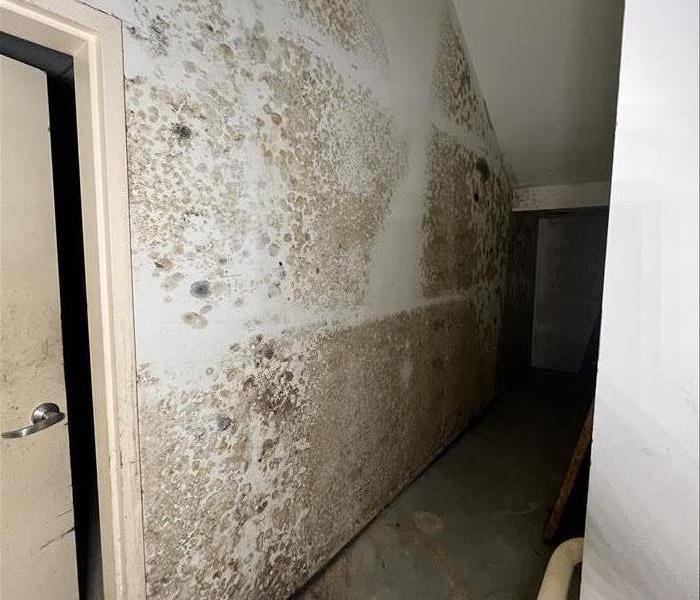 With the amount of water used to put out the fire, your home can become the perfect environment for mold to grow.
With the amount of water used to put out the fire, your home can become the perfect environment for mold to grow.
After a house fire, most people focus on cleaning up damage from the smoke and flames. But there's another issue that can sneak up on homeowners: mold. With the amount of water used to put out the fire, your home can become the perfect environment for mold to grow. SERVPRO of Arlington/Jacksonville East is Here to Help® with some easy tips you can follow.
Why Mold Is a Problem After a Fire
While fire damage is obvious, water can cause its own set of problems. Once a fire is extinguished, standing water or lingering moisture can result in mold growth, causing more damage if not addressed quickly. There is a short window to act fast. Water mixed with the organic materials in your home, like wood and drywall, creates the perfect breeding ground for mold.
Tips to Stop Mold After a Fire
1. Move Fast
Time is important when it comes to preventing mold. Start drying out your home as soon as possible. The longer water sits, the greater the chance mold will appear.
- Get Air Flowing
Good airflow helps to get rid of moisture. Open windows and doors to let fresh air in and use fans to keep air moving. If your HVAC system is working, set it to a dry or cool setting to help remove moisture from the air.
3. Remove Soaked Materials
Wet items like carpets, drywall, and insulation hold moisture, which is where mold thrives. It’s important to take out these materials as soon as possible.
4. Call in the Pros for Water Extraction
Professionals like SERVPRO® use heavy-duty equipment to get rid of water fast. We have special tools like industrial air movers, dehumidifiers, and moisture meters to make sure your home is fully dried out. This helps prevent water from hiding in places like under your floors or inside your walls.
5. Apply Anti-Microbial Treatments
Once your home is dry, adding an anti-microbial treatment can stop mold before it starts. SERVPRO uses treatments that target mold spores and prevent them from growing.
6. Watch the Humidity Levels
Even after drying out your home, you need to keep an eye on the humidity. Mold usually grows when humidity levels rise above 60%. You can use a simple device like a hygrometer to measure the humidity in your home. If the levels are high, consider running a dehumidifier in the affected areas.
Preventing mold after a fire is a race against time, but you don’t have to do it alone. SERVPRO of Arlington/Jacksonville East has the tools and experience needed to handle fire damage and stop mold from growing. We’ll help dry out your home, protect your property, and keep mold from causing more problems down the road.
When to Call a Professional for Mold Removal: Tips from SERVPRO
11/10/2024 (Permalink)
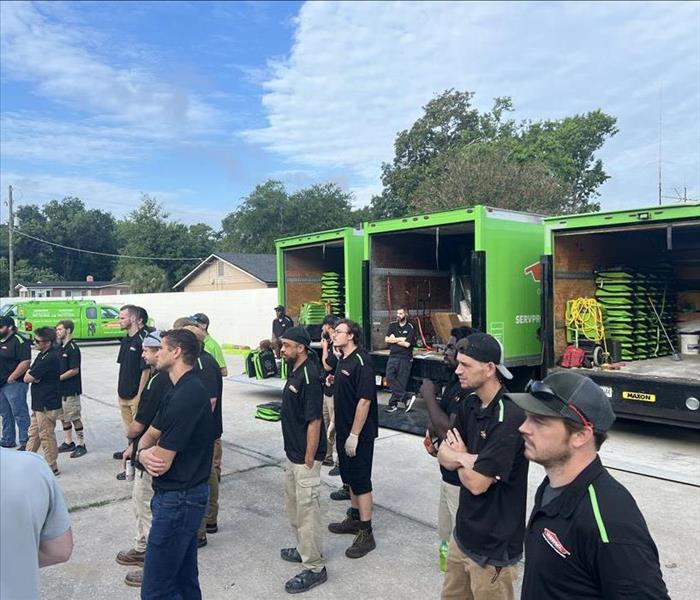 If you’re concerned about mold in your home or want an inspection, contact our SERVPRO team today for help.
If you’re concerned about mold in your home or want an inspection, contact our SERVPRO team today for help.
Mold can be a serious issue in your home or business, but it’s not always clear when it’s time to call in a professional for removal. While small mold spots might seem manageable with DIY solutions, larger or persistent mold problems usually require expert help. In this blog, we’ll walk you through the signs that it’s time to reach out to professionals like SERVPRO® for mold removal.
Knowing When It’s More Than a DIY Job
Mold often starts small, but it can quickly become a much bigger problem. If you’re dealing with a small patch of mold in the bathroom or around windows, you might be able to clean it yourself. But if the mold keeps spreading or if it’s covering a larger area, it’s probably time to call a pro.
The Environmental Protection Agency recommends contacting a professional if the moldy area is larger than 10 square feet. Experts have the tools and experience to handle bigger mold issues safely.
Mold in Hidden Areas
Mold doesn’t always show up where it’s easy to spot. It can grow in hard-to-reach places like behind walls, under carpets, or even in your HVAC system. If you start noticing mold in these hidden spots, it’s tough to tackle on your own. You might not just be dealing with mold but also with the moisture source that’s allowing it to thrive. Professionals can ensure the mold is completely removed and that any underlying issues are fixed.
Persistent Musty Smells
A musty odor is often a sign of mold, even if you can’t see it. If you’ve cleaned and inspected your home but the smell won’t go away, it could mean mold is hiding somewhere out of sight—maybe behind the walls or under floorboards. When you can’t locate the source of the smell, it’s best to call in the experts to track down and address the issue.
Mold That Keeps Coming Back
If you’ve cleaned up mold before but it keeps returning, that’s a red flag. Mold that won’t stay gone often means there’s a deeper issue, like ongoing moisture problems from a leak or poor ventilation. Professional mold remediation not only removes the mold but also addresses the root cause so it doesn’t return.
After Water Damage
If you’ve recently had water damage from a flood, roof leak, or plumbing issue, mold could be growing in your home. Mold can begin to form within 24-48 hours of water exposure, so acting quickly is essential. SERVPRO’s water damage restoration team can help with both the water cleanup and mold removal, ensuring your home is fully restored and mold-free.
When Store-Bought Cleaners Aren’t Enough
While store-bought mold cleaners can help with small issues, they aren’t always enough to fully tackle the problem. These products may only remove surface mold, leaving deeper mold colonies untouched. Professionals use advanced techniques and equipment to remove mold thoroughly and prevent it from coming back.
Protect Your Home with Professional Mold Removal
Mold can quickly become a bigger issue if not handled properly, potentially causing damage to your home. If you’re dealing with mold in large areas, hard-to-reach places, or persistent odors, it’s time to bring in the experts. SERVPRO of Arlington/Jacksonville East’s mold remediation specialists have the skills and tools needed to remove mold safely and effectively, protecting your home from future problems.
If you’re concerned about mold in your home or want an inspection, contact our SERVPRO team today for help.
Protecting Your HVAC System After Water Damage: Cleaning and Restoration Tips
10/2/2024 (Permalink)
Water damage can be a homeowner’s worst nightmare, causing significant structural problems, ruining belongings, and leading to costly repairs. While many focus on the obvious damage to floors, walls, and furniture, the HVAC system is often overlooked as a potential victim of water intrusion. Your HVAC system plays a crucial role in maintaining indoor air quality and comfort, and when it becomes compromised due to water damage, the consequences can be serious.
In this blog, we’ll discuss how water damage affects your HVAC system, the signs to look out for, and how professional cleaning and restoration can help get your system back on track.
How Water Damage Affects Your HVAC System
Water damage to your HVAC system can occur for several reasons, including flooding, roof leaks, burst pipes, or malfunctioning drainage systems. When water infiltrates the system, it can affect the ducts, air handler, furnace, and even the electrical components. If left unaddressed, water exposure can lead to a range of issues:
- Corrosion and Rust: Metal components, such as ducts, coils, and fans, are prone to rust when exposed to moisture over time. This corrosion can damage critical parts of the HVAC system, reducing its efficiency or causing it to stop working altogether.
- Mold Growth: A damp environment is a perfect breeding ground for mold. Once mold takes hold inside your HVAC system, it can spread spores throughout your home every time the system runs, leading to unpleasant odors and other problems.
- Clogged Ducts and Vents: Water in the HVAC system can cause debris to build up in the ducts, leading to clogs. Clogged ducts reduce airflow and force the system to work harder, increasing energy bills and decreasing the system's overall performance.
- Electrical Damage: The electrical components of your HVAC system, including wiring and controls, can short-circuit if exposed to water. This damage can lead to system malfunctions or, in extreme cases, fire hazards.
Signs of Water Damage in Your HVAC System
It’s essential to catch water damage in your HVAC system early to prevent further issues. Look out for the following warning signs:
- Unusual sounds coming from your HVAC unit, such as hissing, popping, or grinding.
- Musty odors or persistent damp smells in your home.
- Reduced airflow or inconsistent temperatures.
- Visible water stains or rust around your HVAC components.
If you notice any of these signs, it’s crucial to act quickly to prevent further damage and costly repairs.
Cleaning and Restoration of Water-Damaged HVAC Systems
When water damage affects your HVAC system, professional cleaning and restoration are essential to ensure the system’s proper function and prevent further damage. SERVPRO® offers comprehensive water damage restoration services, including HVAC system inspections and cleaning. Here’s what the process typically involves:
- Assessment and Inspection: A thorough inspection of the HVAC system will determine the extent of the water damage. This step helps identify areas where water has infiltrated and any potential mold growth.
- Water Extraction and Drying: Removing standing water and thoroughly drying the system is crucial to prevent mold growth and further damage. SERVPRO uses advanced water extraction and drying techniques to ensure all moisture is eliminated.
- Duct Cleaning and Mold Remediation: If mold has developed, specialized cleaning is required to remove it and prevent spores from circulating throughout your home. SERVPRO’s mold remediation services include cleaning affected ductwork and components to restore indoor air quality.
- System Repair and Restoration: Damaged components, such as corroded ducts or electrical parts, may need to be repaired or replaced. SERVPRO ensures that your HVAC system is fully restored to proper working condition.
Water damage can have a significant impact on your HVAC system, potentially leading to costly repairs and poor air quality in your home. If your HVAC system has been exposed to water, it’s essential to act quickly to minimize damage. SERVPRO of Arlington/Jacksonville East has expert water damage restoration services including professional HVAC cleaning, mold remediation, and repairs, ensuring your system is restored to optimal condition. Protect your home’s comfort and indoor air quality by addressing water damage promptly and effectively.
How Storms Can Damage Your Foundation and How to Prevent It
9/18/2024 (Permalink)
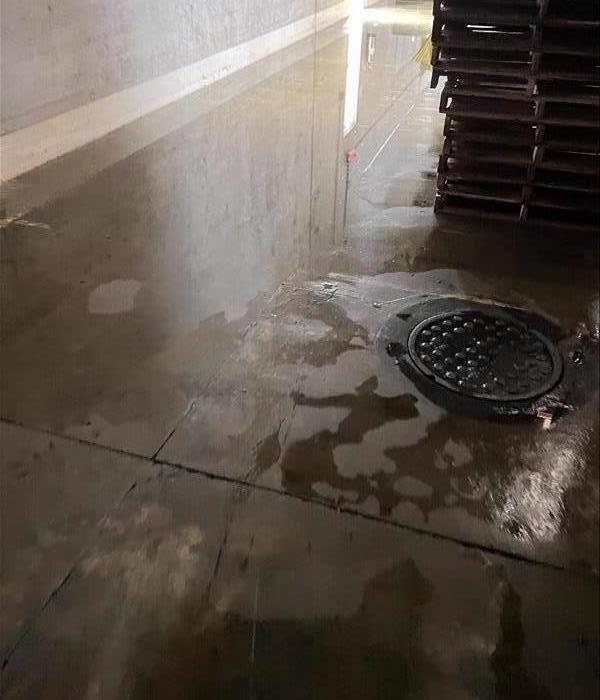 If you see signs of damage or need help with storm repairs, contact SERVPRO of Arlington/Jacksonville East!
If you see signs of damage or need help with storm repairs, contact SERVPRO of Arlington/Jacksonville East!
Living in Jacksonville, FL, we know how frequent storms and heavy rain can be. While we often think about immediate damage like fallen trees, roof leaks, or flooding, storms can also have a serious impact on your home's foundation. Understanding how this happens can help you take steps to protect your home and address any issues early.
How Storms Impact Your Foundation
Storms can do a lot more than just mess up your yard. They can cause real problems for your home's foundation, leading to structural issues if not dealt with promptly. Here’s how storms can affect your foundation:
Soil Erosion and Water Damage
Heavy rain and flooding can wash away the soil around your home. When the ground that supports your foundation gets washed away, it can cause the foundation to settle or shift, which isn’t good news. According to the Federal Emergency Management Agency (FEMA), flooding is the most common and costly natural disaster in the U.S., so it’s something to take seriously.
Hydrostatic Pressure
During big storms, water can build up around your foundation. This creates hydrostatic pressure, which can push against your foundation walls and cause cracks or leaks. Over time, these cracks can get bigger and lead to major structural problems.
Tree Roots and Vegetation
Storms can also affect the trees and plants around your house. When the ground is saturated with water, tree roots can expand and put pressure on your foundation walls. This can lead to cracks and other issues.
Signs of Foundation Damage
Catching foundation damage early can save you a lot of trouble down the line. Here are some common signs to look out for:
Cracks in Walls and Floors
If you notice cracks in your walls or floors, it could mean your foundation is shifting. These cracks can be horizontal, vertical, or diagonal and should be checked out as soon as possible.
Sticking Doors and Windows
Doors and windows that suddenly become hard to open or close might be a sign of foundation problems. Shifting foundations can cause frames to become misaligned, making them difficult to operate.
Uneven Floors
If your floors start to sag or become uneven, it’s a good idea to have your foundation inspected. Uneven floors are a common sign of foundation issues.
Preventing and Addressing Foundation Damage
There are several steps you can take to prevent foundation damage and address any issues that come up:
Proper Drainage
Make sure your property has good drainage to prevent water from pooling around your foundation. This includes keeping gutters and downspouts clean, ensuring your yard slopes away from your home, and possibly installing French drains.
Regular Inspections
Check your foundation regularly for signs of damage, especially after heavy storms. Look for cracks or shifts and address them quickly to prevent more serious problems.
Tree and Vegetation Management
Keep trees and plants well-maintained to prevent root growth from damaging your foundation. Plant trees a safe distance from your home and regularly trim branches to reduce storm damage risk.
When to Call a Professional
If you think your foundation might be damaged, it’s important to call a professional. Foundation problems can be complex and need expert attention. Ignoring these issues can lead to more severe damage and higher repair costs.
Protect Your Home's Foundation
Storms can do a lot of damage to your home's foundation, but understanding how and taking steps to prevent it can make a big difference. If you see signs of damage or need help with storm repairs, contact SERVPRO of Arlington/Jacksonville East. Our team is ready to help with professional restoration services to keep your home safe and sound. Stay alert and take action to protect your home from the hidden dangers of storm damage!
How to Clean Soot from Air Ducts
8/14/2024 (Permalink)
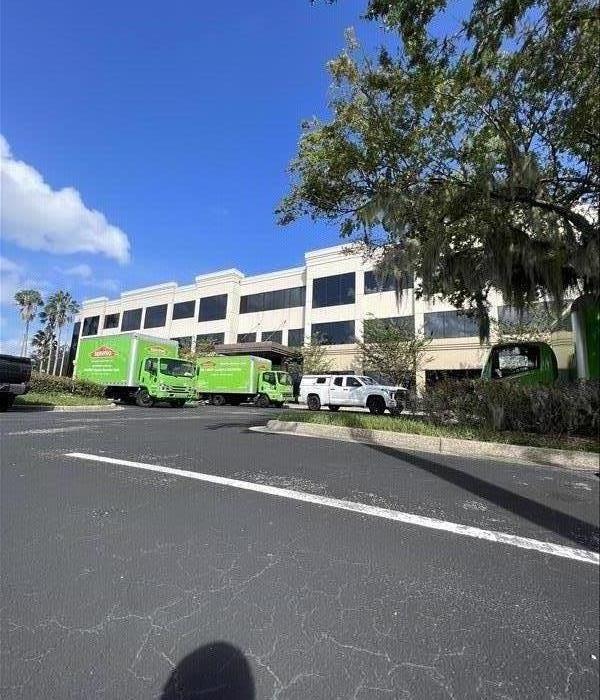 Cleaning soot from air ducts is an important step in restoring air quality and ensuring the proper function of your HVAC system after a fire.
Cleaning soot from air ducts is an important step in restoring air quality and ensuring the proper function of your HVAC system after a fire.
Soot in your air ducts can be a significant problem, especially after a fire. It can affect the air quality in your home and pose risks to your HVAC system. Properly cleaning soot from air ducts is crucial to ensure a healthy living environment. In this blog, we will guide you through the steps of cleaning soot from air ducts effectively and safely.
Why Cleaning Soot from Air Ducts is Important
Soot particles are not just dirty; they can also be harmful. According to the Environmental Protection Agency (EPA), indoor air pollution can be significantly higher than outdoor air pollution, especially after a fire event. Ensuring your air ducts are clean helps maintain better air quality and extends the life of your HVAC system.
Steps to Clean Soot from Air Ducts
1. Turn Off Your HVAC System
Before starting the cleaning process, turn off your HVAC system. This prevents the soot from circulating while you clean.
2. Wear Protective Gear
Wear protective clothing, gloves, goggles, and a mask to avoid contact with soot.
3. Inspect the Air Ducts
Begin by inspecting the air ducts to assess the extent of the soot contamination. Use a flashlight to look inside the ducts for visible soot and debris.
4. Vacuum the Ducts
Use a high-powered vacuum with a HEPA filter to remove loose soot and debris from the ducts. A HEPA filter is essential because it can capture the tiny soot particles that other vacuums might miss. Attach a hose to the vacuum and carefully insert it into the ducts to remove as much soot as possible.
5. Clean with Soot Sponges
For remaining soot, use soot sponges, also known as chemical sponges. These sponges are designed to clean soot and can be very effective. Gently wipe the interior surfaces of the ducts with the sponge. Replace the sponge when it becomes saturated with soot to ensure efficient cleaning.
6. Use a Cleaning Solution
Prepare a cleaning solution with water and a mild detergent. Dampen a cloth with the solution and wipe down the inside of the ducts. Avoid using excessive water, as it can damage the ductwork. For stubborn soot deposits, you might need a commercial duct cleaner.
7. Disinfect the Ducts
After cleaning, use a disinfectant to sanitize the ducts. This helps eliminate any remaining soot particles and prevents mold growth. Spray the disinfectant inside the ducts and let it dry completely.
8. Replace Air Filters
Once the ducts are clean, replace the air filters in your HVAC system. Soot particles can easily clog filters, reducing the efficiency of your system. Regularly changing filters ensure cleaner air and a better-performing HVAC system.
9. Professional Cleaning
For extensive soot contamination, consider hiring a professional duct cleaning service. Professionals have the tools and expertise to thoroughly clean and disinfect air ducts. According to the National Air Duct Cleaners Association (NADCA), professional cleaning can significantly improve indoor air quality and HVAC efficiency.
Keeping Your Air Ducts Clean
Regular maintenance of your air ducts can prevent the buildup of soot and other contaminants. Schedule regular inspections and cleanings to keep your HVAC system in top condition. After events like a fire, it’s especially important to ensure your air ducts are free of soot to maintain a safe and healthy home environment.
Cleaning soot from air ducts is an important step in restoring air quality and ensuring the proper function of your HVAC system after a fire. By following the steps outlined above, you can effectively remove soot and protect your home from the harmful effects of soot particles. For severe cases, don’t hesitate to call in professionals like SERVPRO of Arlington/Jacksonville East who have the expertise and equipment to handle the job thoroughly. Maintaining clean air ducts is key to a healthy living environment and a well-functioning HVAC system.
Keeping Your HVAC System Mold-Free: Effective Prevention Tips
7/17/2024 (Permalink)
Mold growth in HVAC systems can pose significant risks to your property and compromise indoor air quality. Preventing mold growth in these systems is essential for maintaining a safe and comfortable indoor environment. Here are some practical tips to help you keep your HVAC system mold-free:
1. Regular Maintenance
One of the most crucial steps in preventing mold growth in your HVAC system is regular maintenance. Schedule routine inspections and maintenance checks by qualified professionals to ensure that your system is clean and functioning correctly. This includes cleaning or replacing air filters, checking for leaks or moisture buildup, and inspecting ductwork for any signs of mold growth or contamination.
2. Maintain Proper Humidity Levels
Maintaining appropriate humidity levels within your home is essential for preventing mold growth. Use a hygrometer to monitor indoor humidity levels and keep them between 30% and 50%. Consider installing a whole-house dehumidifier to help regulate humidity levels, especially in areas prone to excess moisture, such as basements or bathrooms.
3. Ensure Proper Ventilation
Proper ventilation is crucial for preventing mold growth in HVAC systems. Ensure that your HVAC system is adequately ventilated to allow for proper air circulation and prevent moisture buildup. Use exhaust fans in bathrooms and kitchens to remove excess moisture, and consider installing ventilation fans in other areas of your home where humidity levels may be high.
4. Clean and Inspect Ductwork
Regularly clean and inspect your HVAC ductwork for any signs of mold growth or contamination. Mold can easily grow in ducts that are not properly sealed or insulated, especially if there is a buildup of dust or debris. Consider hiring a professional duct cleaning service to thoroughly clean and sanitize your ductwork, especially if you notice any musty odors or visible signs of mold.
5. Address Water Damage Quickly
Water damage can quickly lead to mold growth in HVAC systems if left untreated. Address any water leaks, spills, or moisture issues promptly to prevent mold from taking hold. Repair any leaks in your HVAC system, including condensate drain lines or air conditioning units, and ensure that any water-damaged materials are properly dried and cleaned to prevent mold growth.
6. Use Mold-Resistant Materials
When replacing or installing HVAC components, consider using mold-resistant materials whenever possible. Look for products that are specifically designed to resist mold growth, such as mold-resistant insulation or coatings. Additionally, choose materials that are easy to clean and maintain to prevent mold from taking hold.
7. Monitor for Signs of Mold
Keep an eye out for any signs of mold growth in your HVAC system, such as musty odors, visible mold growth on vents or ductwork, or allergy symptoms among occupants. If you suspect mold growth in your HVAC system, contact a professional mold remediation company, like SERVPRO®, to assess the situation and provide appropriate remediation services.
In conclusion, preventing mold growth in your HVAC system requires regular maintenance, proper humidity control, adequate ventilation, and prompt attention to any water damage or moisture issues. By following these prevention tips and staying vigilant for signs of mold growth, you can help ensure that your HVAC system remains clean, efficient, and mold-free.
Rapid Response to Water Damage: Why Time is of the Essence
6/12/2024 (Permalink)
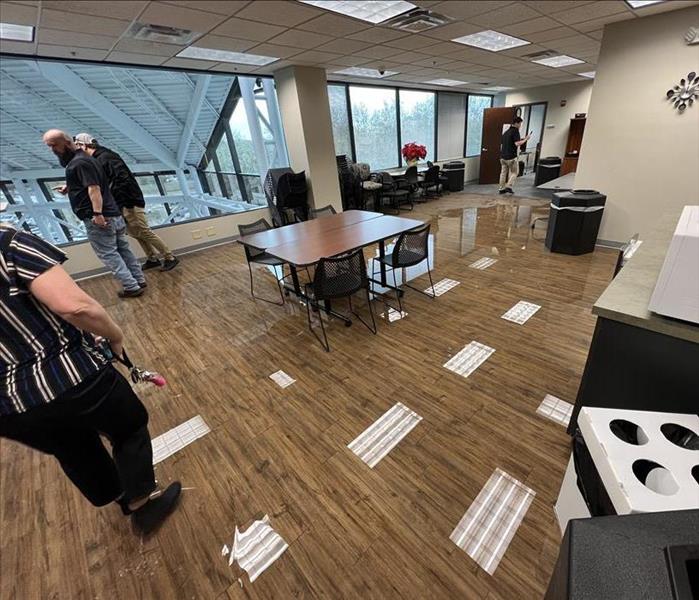 Remember, when it comes to water damage, time is of the essence. Don't delay – call SERVPRO today!
Remember, when it comes to water damage, time is of the essence. Don't delay – call SERVPRO today!
Water damage can wreak havoc on your property, causing structural damage, mold growth, and even health hazards if left untreated. Whether it's a burst pipe, a leaking roof, or a flood, the key to minimizing the damage is a rapid response. At SERVPRO®, we understand the urgency of the situation, and that's why we prioritize swift action when it comes to water damage restoration. In this blog post, we'll explore why time is of the essence when it comes to addressing water damage and how our rapid response can make all the difference.
Preventing Further Damage
When water infiltrates your property, it doesn't just stay in one place. It seeps into walls, floors, and furniture, causing extensive damage along the way. The longer water sits, the more damage it causes, leading to warped wood, deteriorated drywall, and compromised structural integrity. By responding quickly to water damage, we can mitigate further damage and save you from costly repairs down the line.
Mold Prevention
One of the biggest risks associated with water damage is mold growth. Mold can start to develop within 24 to 48 hours of water exposure, posing serious health risks to you and your family. Our rapid response ensures that we can dry out the affected areas promptly, reducing the likelihood of mold growth and safeguarding your indoor air quality.
Preserving Belongings
Water damage doesn't just affect the structure of your property; it can also ruin your belongings. Furniture, electronics, and personal items can sustain irreversible damage if not addressed quickly. Our team is equipped with the expertise and tools necessary to salvage as much as possible, helping you minimize losses and preserve your cherished possessions.
Minimizing Downtime
Dealing with water damage can disrupt your daily life or business operations. The longer it takes to address the issue, the more downtime you'll experience. Our rapid response ensures that we can get your property back to its pre-damaged condition as quickly as possible, minimizing disruptions and allowing you to resume normal activities sooner.
Insurance Considerations
Prompt action is not only crucial for mitigating damage but also for insurance purposes. Most insurance policies require policyholders to take immediate action to prevent further damage after a water-related incident. By contacting us promptly, you can demonstrate your commitment to minimizing losses and expedite the insurance claims process.
At SERVPRO, we understand that water damage can be a stressful and overwhelming experience. That's why we're committed to providing fast, reliable, and professional water damage restoration services. Our team is available 24/7 to respond to emergencies promptly, ensuring that your property is in good hands from start to finish. Don't wait until it's too late – contact us at the first sign of water damage, and let us help you restore your property to its former glory.
Preventing and Repairing Roof Leaks
5/15/2024 (Permalink)
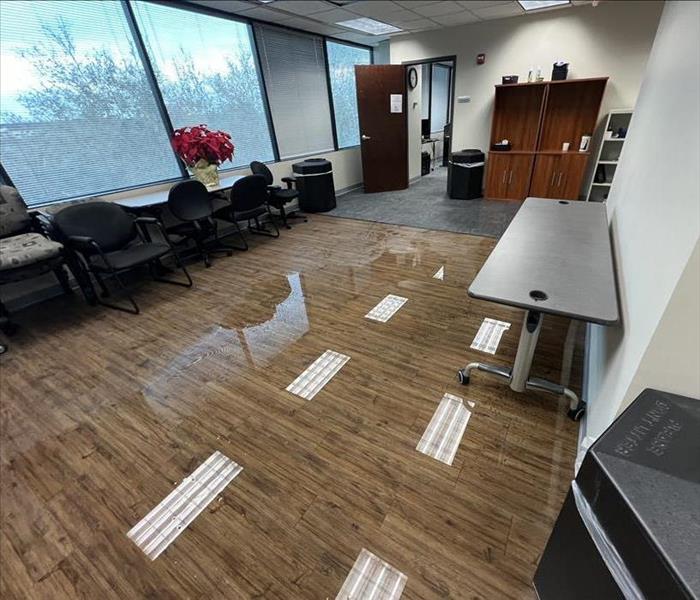 If you're facing a problem like this, call SERVPRO immediately!
If you're facing a problem like this, call SERVPRO immediately!
Are you hearing the dreaded drip-drip-drip of a roof leak? Roof leaks are not only a nuisance but can also lead to significant damage to your property if left unattended. At SERVPRO®, we understand the importance of maintaining a leak-free roof to protect your home or business. In this blog post, we'll discuss some preventive measures and repair tips to keep your roof in top condition.
Preventive Measures
The best defense is a good offense, so let’s dive into a few preventative measures you can employ before there is a problem to deal with.
- Regular Inspections: Schedule annual roof inspections to catch any potential issues before they escalate into major leaks. Look for cracked or missing shingles, damaged flashing, and signs of wear and tear.
- Keep Gutters Clean: Clogged gutters can cause water to overflow onto your roof, leading to water damage and leaks. Clean your gutters regularly to ensure proper drainage.
- Trim Overhanging Branches: Overhanging branches can rub against your roof, causing damage to shingles and creating entry points for water. Trim back branches to prevent this from happening.
- Seal Cracks and Gaps: Inspect your roof for any cracks or gaps and seal them promptly with caulk or roofing cement to prevent water intrusion.
- Proper Ventilation: Ensure your attic has proper ventilation to prevent moisture buildup, which can contribute to roof deterioration and leaks.
Repair Tips
When you do have a roof leak on your hands, hope isn’t lost! Here are a few tips on how to deal with the issue.
- Address Shingle Damage: Replace any cracked, curled, or missing shingles immediately to prevent water from seeping into your home.
- Fix Flashing Issues: Damaged flashing around chimneys, vents, and skylights can allow water to penetrate your roof. Repair or replace damaged flashing to prevent leaks.
- Patch Small Leaks: If you notice a small leak, patch it temporarily with roofing cement or a patching kit until you can schedule a professional repair.
- Replace Damaged Underlayment: If your roof has a damaged underlayment, it can compromise its integrity and lead to leaks. Replace damaged underlayment promptly to prevent further damage.
- Professional Repair: For extensive damage or persistent leaks, it's best to enlist the help of a professional roofing contractor. They have the expertise and equipment to assess the extent of the damage and provide effective repairs.
By following these preventive measures and repair tips, you can keep your roof in excellent condition and prevent costly water damage to your property. Remember, a well-maintained roof is key to protecting your home or business from the elements.
At SERVPRO, we're here to help you with all your water damage restoration needs. If you're dealing with a roof leak or any other water-related issues, don't hesitate to contact us for prompt and professional assistance. Stay dry and leak-free!
Preventing Arson: Tips for Property Owners
4/19/2024 (Permalink)
As trusted experts in property restoration, SERVPRO® is committed to not only addressing the aftermath of disasters but also helping property owners prevent them. One of the most devastating and intentional threats property owners face is arson. In this blog post, we'll explore proactive steps you can take to safeguard your property from arson, providing you with essential tips and insights.
Understanding the Risk
Arson poses a severe threat to both residential and commercial properties, leading to significant financial losses, emotional distress, and potential harm to occupants. Recognizing the risk is the first step towards prevention. Stay vigilant and educate yourself on the signs of suspicious activity in and around your property.
Securing Access Points
Preventing unauthorized access to your property is crucial in deterring potential arsonists. Ensure that doors, windows, and other entry points are secure. Install quality locks, consider using security cameras, and, if applicable, implement access control systems. A well-lit property also discourages criminal activities, making it an effective deterrent.
Landscaping and Property Maintenance
Maintaining a well-kept property not only enhances its curb appeal but also acts as a deterrent to arsonists. Regularly trim overgrown vegetation, remove combustible materials, and keep the premises clean. By eliminating potential hiding spots and reducing fuel sources, you create a less attractive target for arsonists.
Community Awareness
Building a sense of community is vital for preventing arson. Establish neighborhood watch programs, encourage open communication among residents, and promote awareness of suspicious activities. Remember, an informed community is better equipped to prevent and respond to potential threats.
Fire Prevention Systems
Investing in reliable fire prevention systems can significantly reduce the risk of arson. Install smoke detectors, fire sprinklers, and fire-resistant materials in your property. These measures not only protect your assets but also contribute to the safety of occupants.
Emergency Planning
Develop and practice emergency response plans with all occupants of your property. Ensure everyone knows evacuation routes, emergency contact information, and the location of fire extinguishers. By being prepared, you can minimize potential damage in case of an arson attempt.
Arson is a serious threat that requires proactive measures to protect your property. By implementing these SERVPRO tips, you can significantly reduce the risk of arson and create a safer environment for your home or business. Stay informed, stay vigilant, and work together with your community to safeguard what matters most. Remember, prevention is the key to a secure future.
Navigating Mold Damage: Unpacking the Role of Renters Insurance
3/7/2024 (Permalink)
Renters insurance provides a safety net for tenants, offering financial protection in the face of unexpected events. However, the coverage can be nuanced, and one common concern is whether renters insurance covers mold damage. In this blog, we'll explore the ins and outs of renters insurance in relation to mold damage.
Understanding Renters Insurance
Renters insurance typically consists of two main components: personal property coverage and liability coverage. While it's designed to cover various perils, the specifics of mold damage coverage can vary among insurance policies.
Renters insurance typically covers damage caused by specific perils outlined in the policy. These may include incidents like fire, smoke damage, vandalism, and certain types of water damage. The key is understanding the source and nature of the water damage leading to mold.
The coverage for mold damage often hinges on the source of the water damage. If the water damage is a result of a covered peril, such as a burst pipe or a roof leak caused by a covered event like a storm, renters insurance may cover the resulting mold damage.
- Gradual Damage vs. Sudden Events
Renters insurance is more likely to cover sudden and accidental events that lead to mold damage. If mold develops gradually over time due to maintenance issues or neglect, it may not be covered, as renters insurance typically emphasizes sudden and unforeseen incidents.
It's crucial to carefully review the exclusions and limitations outlined in your renters insurance policy. Some policies may explicitly exclude mold damage, while others may limit the coverage amount or set conditions for coverage eligibility.
- Personal Property vs. Structure
Renters insurance primarily focuses on personal property, including belongings within the rental unit. Coverage for the structure itself, such as walls, floors, or ceilings, may be limited. Mold damage to the structure might fall under the landlord's insurance responsibility.
Taking Proactive Measures
- Communication with the Landlord
If you discover mold or water damage in your rental unit, promptly communicate with your landlord. Landlords typically maintain insurance for the structure, and they may be responsible for addressing certain types of damage.
Document any incidents or damages thoroughly. This includes taking photos, keeping records of communication with your landlord, and providing documentation to your insurance company if you need to file a claim.
Navigating the realm of renters insurance and mold damage requires careful examination of policy details. While coverage for mold damage is possible, understanding the terms, exclusions, and conditions is essential. Communicating effectively with your landlord and insurance provider, documenting incidents, and staying informed about your policy can empower you to make informed decisions in the event of mold-related challenges. Remember, every insurance policy is unique, so reviewing and understanding your specific coverage is key to managing potential mold-related issues effectively. SERVPRO® is just a phone call away when you need expert assistance in mold removal, remediation, and restoring your home from mold damage.
 With the amount of water used to put out the fire, your home can become the perfect environment for mold to grow.
With the amount of water used to put out the fire, your home can become the perfect environment for mold to grow.






 24/7 Emergency Service
24/7 Emergency Service



